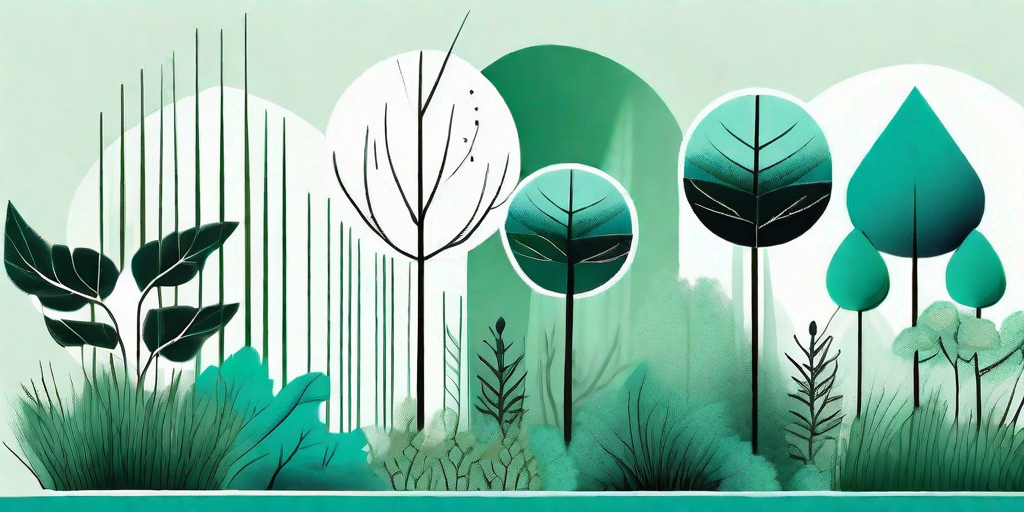
Welcome, green-thumbed enthusiasts and curious beginners alike! If you've ever looked at your trees and thought, "Hmm, you could use a haircut," then you're in the right place. Today, we're diving into the world of pollarding, a tree trimming technique that's as fun to say as it is to do. So, grab your loppers, put on your gardening gloves, and let's get started!
What is Pollarding?
Before we start hacking away at your trees, it's important to understand what pollarding is. In essence, pollarding is a method of pruning that encourages a dense head of foliage and branches. It's like giving your tree a stylish pixie cut, but with a few more benefits than just looking good.
Originally, pollarding was used in Europe to prevent trees from outgrowing their space, providing a sustainable source of firewood and animal fodder. These days, it's more commonly used to maintain the health of a tree, control its size, and enhance its aesthetic appeal. So, if you've got a tree that's getting a bit too big for its boots, pollarding might be just the ticket.
The Benefits of Pollarding
Now that we've covered the basics, let's delve into the benefits of pollarding. After all, you wouldn't go for a haircut without knowing the benefits, would you?
Firstly, pollarding can significantly improve the health of your tree. By removing diseased, dying, or dead branches, you're giving your tree a new lease on life. It's like a tree spa day, but without the cucumber slices.
Secondly, pollarding can help control the size of your tree. If your tree is starting to resemble a skyscraper, pollarding can bring it back down to a more manageable size. It's like tree yoga, helping your tree to become more flexible and adaptable.
Lastly, pollarding can enhance the aesthetic appeal of your tree. With a bit of careful pruning, you can transform your tree into a living sculpture. It's like tree topiary, but without the need for a degree in fine arts.
How to Pollard a Tree
Alright, enough chit-chat. It's time to roll up our sleeves and get to work. Here's a step-by-step guide on how to pollard a tree.
Step 1: Choose the Right Tree
Not all trees are suitable for pollarding. Some trees, like willows and poplars, take to pollarding like a duck to water. Others, like pines and spruces, are more like cats to water. Do your research and make sure your tree is a good candidate for pollarding before you start.
Step 2: Choose the Right Time
Timing is everything when it comes to pollarding. The best time to pollard a tree is in late winter or early spring, when the tree is still dormant but about to burst into growth. It's like waking your tree up with a gentle nudge rather than a blaring alarm clock.
Step 3: Choose the Right Tools
You wouldn't try to cut your hair with a bread knife, would you? The same principle applies to pollarding. Make sure you have the right tools for the job, including a sharp pair of loppers, a pruning saw, and a sturdy ladder.
Step 4: Start Pruning
Start by removing the lower branches of the tree, working your way up. Once you reach the top of the tree, cut back the branches to the desired height. Remember, it's better to cut too little than too much. You can always trim more later, but you can't stick branches back on.
Common Mistakes to Avoid
Like any art form, pollarding comes with its fair share of potential pitfalls. Here are a few common mistakes to avoid.
Mistake 1: Over-Pruning
While it might be tempting to go all Edward Scissorhands on your tree, resist the urge. Over-pruning can stress your tree and make it more susceptible to disease and pests. Remember, less is more.
Mistake 2: Wrong Timing
As mentioned earlier, timing is crucial when it comes to pollarding. Pruning your tree at the wrong time can lead to poor growth and even tree death. So, mark your calendar and stick to it.
Mistake 3: Ignoring Safety
Tree pruning can be dangerous, especially if you're dealing with a tall tree. Always use a sturdy ladder, wear protective gear, and if in doubt, call a professional.
Frequently Asked Questions
Still got questions? Don't worry, we've got answers. Here are some frequently asked questions about pollarding.
Can I pollard any tree?
While it's technically possible to pollard any tree, some trees respond better to pollarding than others. As a general rule, fast-growing trees like willows and poplars are good candidates for pollarding.
How often should I pollard my tree?
This depends on the type of tree and the desired effect. Some trees need to be pollarded every year, while others can go several years between prunings. When in doubt, consult a professional.
Can I pollard a mature tree?
While it's possible to pollard a mature tree, it's generally best to start pollarding when a tree is young. This allows the tree to adapt to the pruning process and develop a strong framework of branches.
Conclusion
And there you have it, folks! Everything you need to know about pollarding. So, what are you waiting for? Grab your loppers, head out to your garden, and start trimming those trees like a pro!















